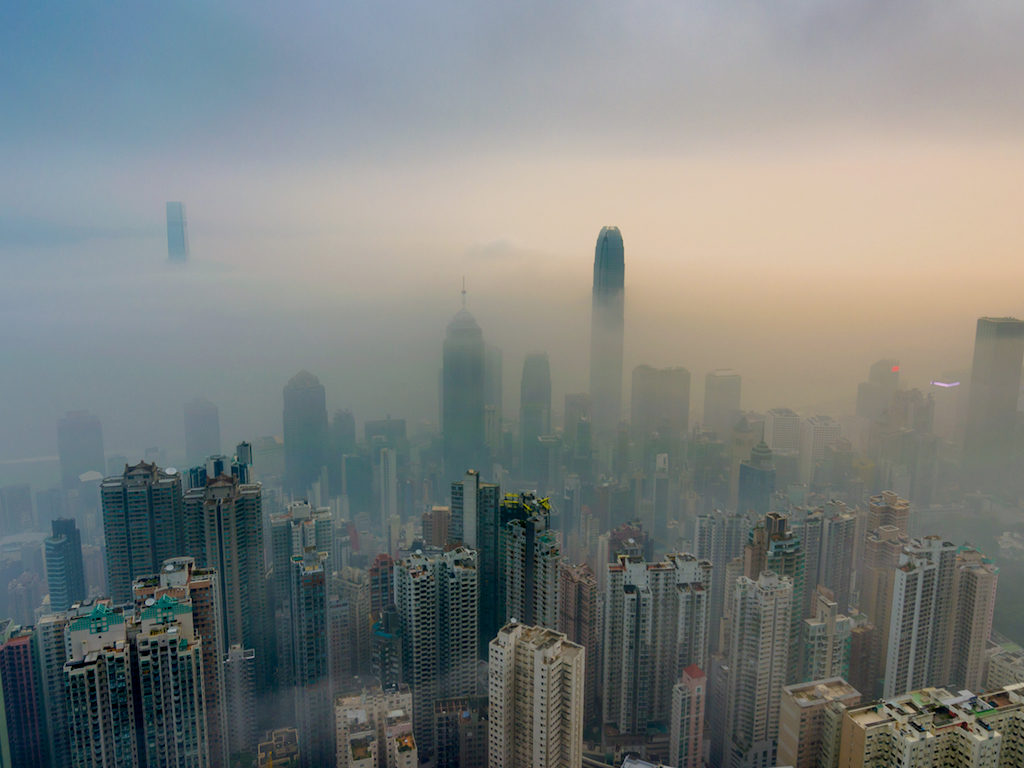4 Mins Read
Hong Kong’s chief executive Carrie Lam has vowed that the city will achieve carbon neutrality by 2050 in her annual policy address. The goal, which comes shortly after Beijing set its timeline for 2060, came with no concrete strategy to slash the city’s emissions, with environmentalists pointing out that Lam’s focus on the land-reclamation plan in Lantau coming in direct contradiction to her questionable climate commitments.
In her policy address las week (November 25), Lam pledged that Hong Kong would reach net-zero by 2050, in line with what scientists say is necessary in order to avoid ecological and climate collapse. The commitment follows Beijing’s plan to slash its emissions to zero by 2060, in a surprising change in tone for one of the world’s biggest polluters.
It also comes after a number of Asian countries have renewed their climate efforts, including South Korea and Japan, who have both committed to the same 2050 target as Hong Kong.
“To this end, the Government will update the ‘Hong Kong’s Climate Action Plan’ in the middle of next year to set out more proactive strategies and measures to reduce carbon emissions,” said Lam in her blueprint.
However, there were no concrete policies laid out in Lam’s address to reveal what specific measures the city will take to slash its carbon emissions on top of its endorsement of the recommendations outlined by the Council for Sustainable Development, which many environmentalists have criticised as lukewarm and insufficient.
The bulk of our emissions come from electricity generation, but the government still has not set any concrete targets for increasing the proportion of renewable energy in our fuel mix.
Jeffrey Hung Oi-shing, CEO, Friends of the Earth Hong Kong

“There is no way we would be able to achieve carbon neutrality by 2050 if the government followed those suggestions,” Jeffrey Hung Oi-shing, CEO of NGO Friends of the Earth Hong Kong told the SCMP.
Among some of the measures the council has put forward include studying the safe use of nuclear energy, promoting sustainable buildings and green architecture, and encouraging low-carbon transportation systems. Yet, there is no plan to green the city’s electricity supply, the majority of which is based on fossil fuels.
“The bulk of our emissions come from electricity generation, but the government still has not set any concrete targets for increasing the proportion of renewable energy in our fuel mix,” Hung added.
Under its self-determined goals submitted to the Paris Agreement, Hong Kong has promised to develop renewables to cover just 3% of the city’s power supply by 2030, much lower than the 8% outlined in Singapore’s plans.
Edwin Lau Che-feng, executive director of nonprofit The Green Earth, also told the publication that many of the policies that would supposedly help the city reduce its emissions were already in the process of being implemented, such as bolstering the use of electric vehicles. There appeared to be a lack of any new plans to increase the city’s climate efforts.
If they do [the Lantau scheme], it would overshadow any achievements from the other carbon-cutting measures.
Edwin Lau Che-feng, Executive Director, The Green Earth
Lau added that Lam’s policy address pushed for the controversial land-reclamation plan dubbed the “Lantau Tomorrow Vision” – a move that appears to be “completely contradictory” to the city’s net-zero pledge.
From transporting the raw materials for the project, to the use of carbon-intensive concrete and the physical destruction of marine ecosystems, the Lantau plan is set to plunge Hong Kong into deeper environmental turmoil, rather than alleviating the city’s footprint. Environmentalists have pointed out that other sites, such as brownfield locations or abandoned rural land could be used to build more public housing, rather than the costly and polluting measure of land-reclamation.
“If they do [the Lantau scheme], it would overshadow any achievements from the other carbon-cutting measures.”
Scientists and researchers in Hong Kong have previously said that it is possible for the city to reach net-zero if drastic policies are put in place. Released in June this year by independent think tank Civic Exchange and the global research group World Resources Institute (WRI), the report found that as much as 90% of the city’s greenhouse gas emissions can be reduced by focusing on decarbonising the city’s energy system, retrofitting buildings and enforcing an electric vehicle mandate.

Read: All the reasons why Hong Kong needs a meat tax
Furthermore, there is no mention in Lam’s address on measures to reduce the Hong Kong’s food footprint. In a 2018 report by the University of Hong Kong’s Earth Science department, Hong Kong ranks as the 7th highest emitter among 113 regions globally, stemming from the city’s rising consumption of imported meat and dairy.
On top of accounting for almost a fifth of global carbon emissions, animal agriculture contributes to unsustainable resource use, from water to land. In particular, Hong Kong’s demand for beef – predominantly sourced from Brazil and nabbing the spot as the top importer of beef from the country worldwide – links the city directly to the Amazon deforestation crisis.
Campaigners have also pointed to the need to end the stalling on tackling Hong Kong’s enormous waste problem, which has become increasingly severe with no end in sight after the city’s proposed waste levy bill was scrapped earlier this year.
Lead image courtesy of Inmediahk.




